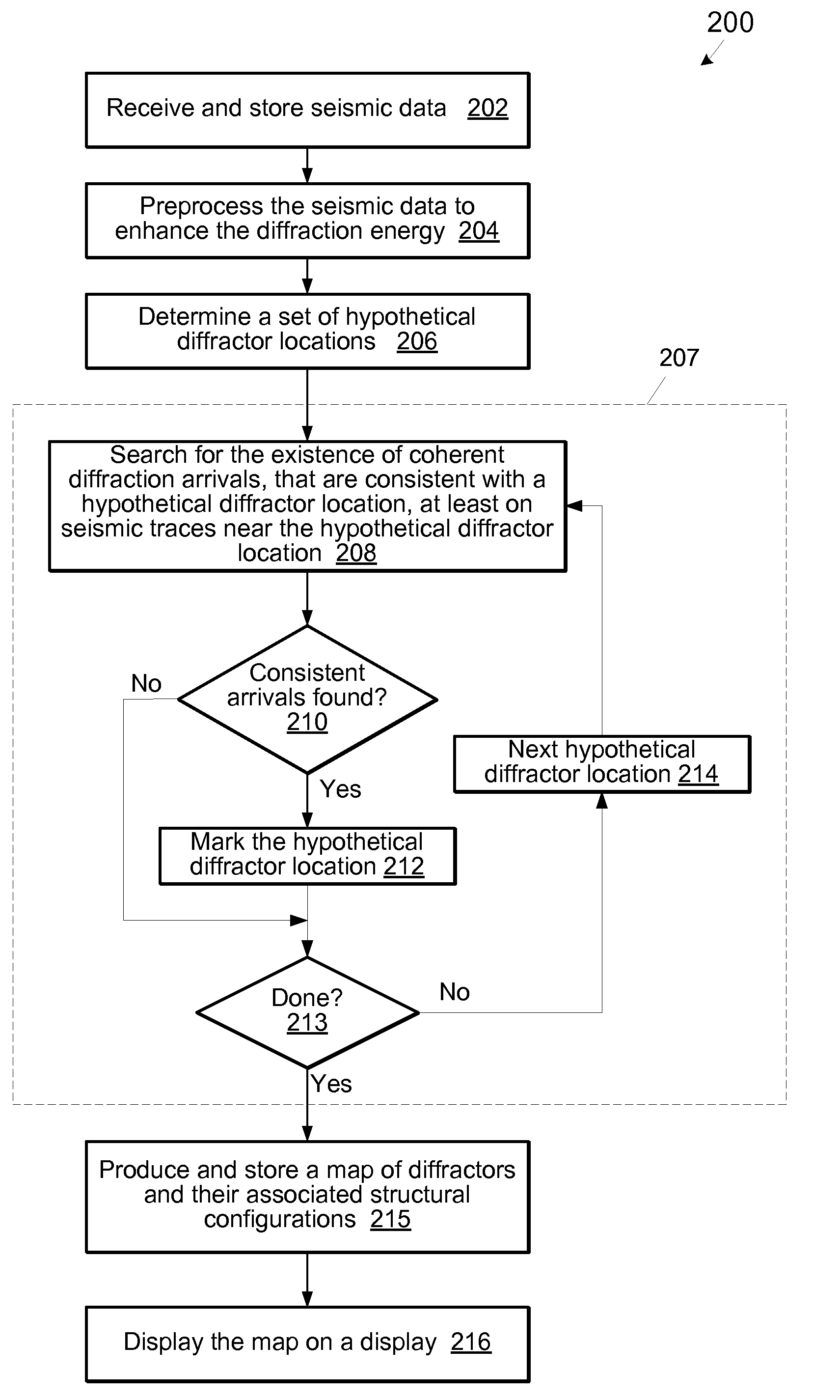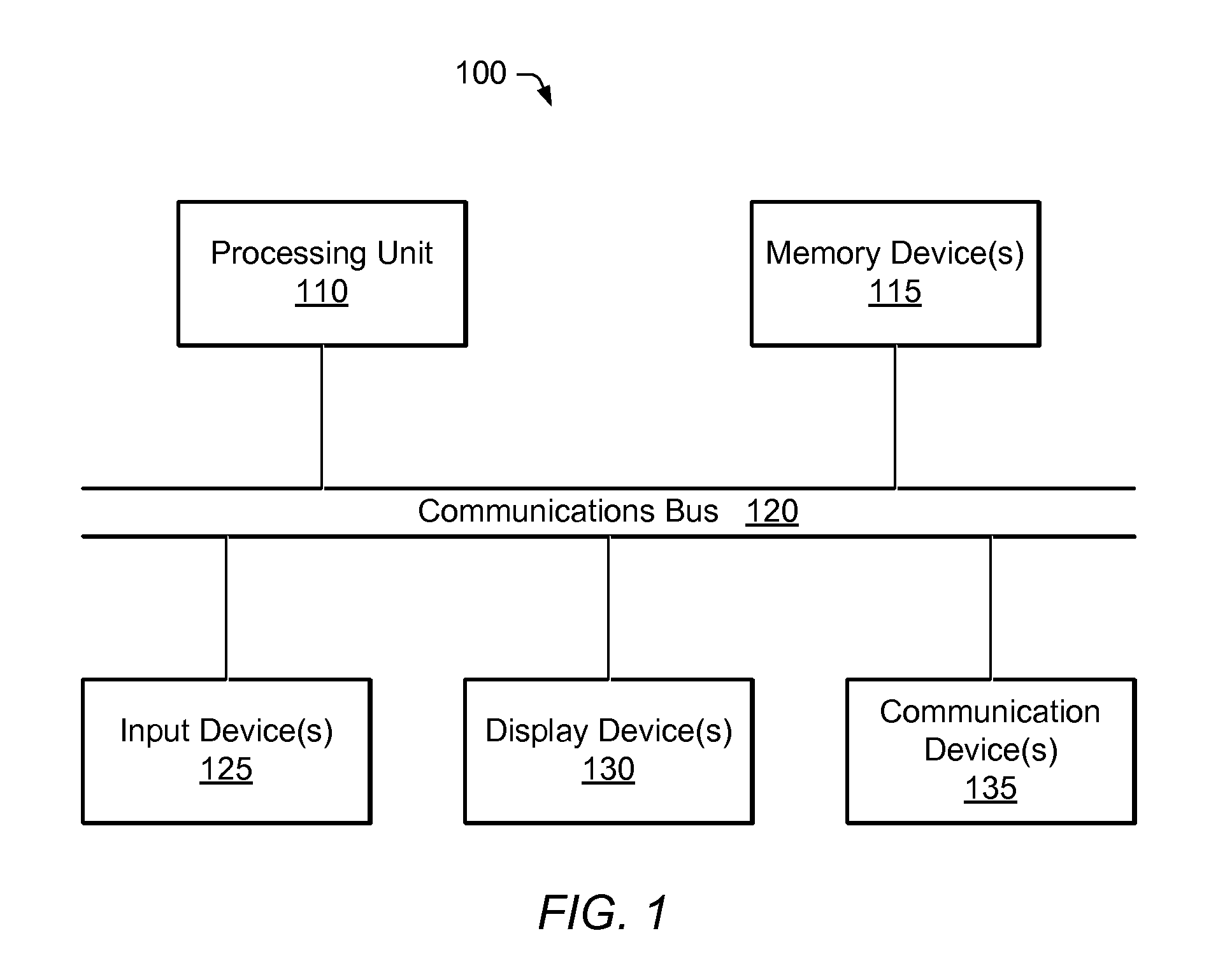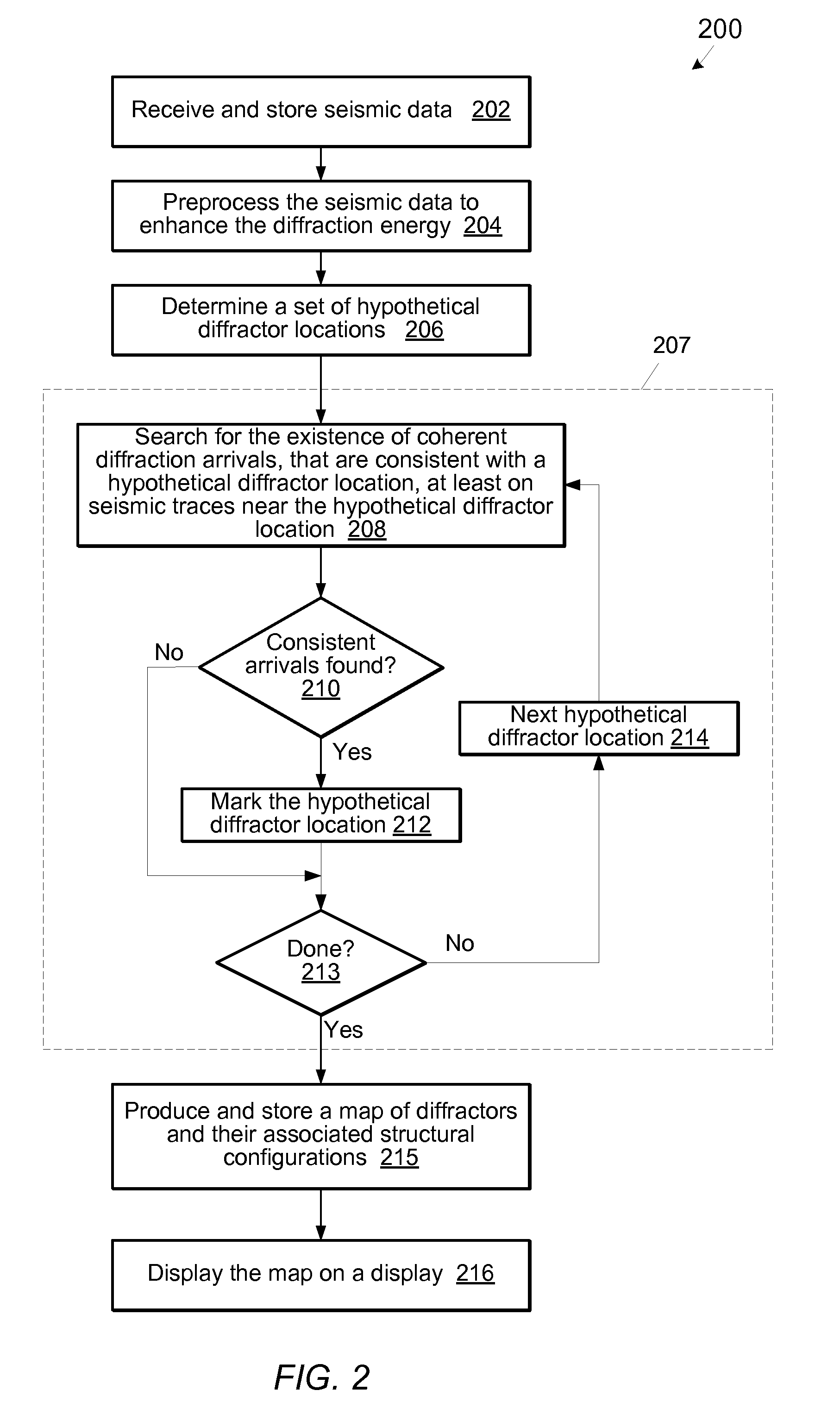Analyzing 2-D Surface and/or Borehole Seismic Data to Locate Subsurface Diffractors
a seismic data and subsurface technology, applied in the field of seismic data processing, can solve the problems of not being able to provide reliable knowledge about the unpredictable structure of the line, and not being generally suited to 3-d seismic migration imaging
- Summary
- Abstract
- Description
- Claims
- Application Information
AI Technical Summary
Benefits of technology
Problems solved by technology
Method used
Image
Examples
Embodiment Construction
[0039]The present invention may be realized in any of various forms. For example, in some embodiments, the present invention may be realized as a computer-implemented method, a computer-accessible memory medium, or a computer system. In other embodiments, the present invention may be realized using one or more custom designed hardware devices such as ASICs or FPGA's.
[0040]A memory medium is a medium configured for the storage and retrieval of information. Examples of memory media include: various kinds of semiconductor memory such as RAM and ROM; various kinds of magnetic media such as magnetic disk, tape, strip, and film; various kinds of optical media such as CD-ROM and DVD-ROM; various media based on the storage of electrical charge and / or other physical quantities; media fabricated using various lithographic techniques; etc.
[0041]A computer-accessible memory medium is a memory medium that stores program instructions and / or data, where the program instructions are executable by a...
PUM
 Login to View More
Login to View More Abstract
Description
Claims
Application Information
 Login to View More
Login to View More - R&D
- Intellectual Property
- Life Sciences
- Materials
- Tech Scout
- Unparalleled Data Quality
- Higher Quality Content
- 60% Fewer Hallucinations
Browse by: Latest US Patents, China's latest patents, Technical Efficacy Thesaurus, Application Domain, Technology Topic, Popular Technical Reports.
© 2025 PatSnap. All rights reserved.Legal|Privacy policy|Modern Slavery Act Transparency Statement|Sitemap|About US| Contact US: help@patsnap.com



